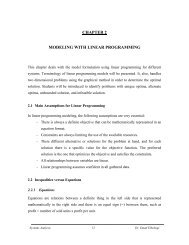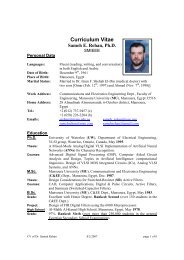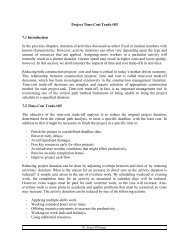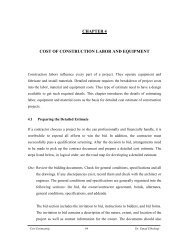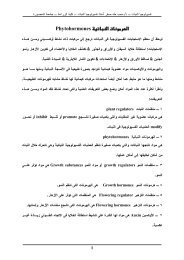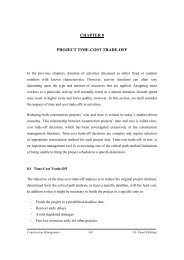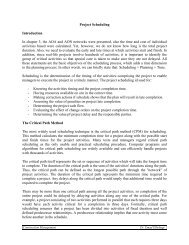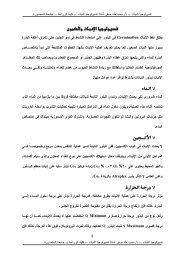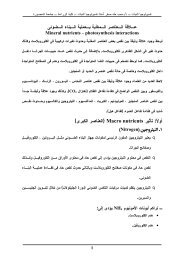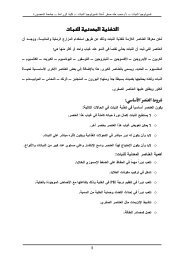Thyroid and Parathyroid
Thyroid and Parathyroid
Thyroid and Parathyroid
You also want an ePaper? Increase the reach of your titles
YUMPU automatically turns print PDFs into web optimized ePapers that Google loves.
It is important for cosmesis that the patient's chin, thyroid cartilage, <strong>and</strong> suprasternal<br />
notch be aligned vertically before an incision is made. Failure to establish this<br />
alignment may result in an asymmetric <strong>and</strong> unsightly incision. A thyroid surgical<br />
drape is placed with tie-tapes passing behind each earlobe <strong>and</strong> anchored at the head of<br />
.( the table with a single hemoclip (see Fig. 36-49<br />
A collar incision is made approximately two fingerbreadths above the suprasternal<br />
notch, which usually means the incision is situated over the cricoid cartilage. The<br />
surgeon should look carefully for obvious skin creases slightly above or below this<br />
site; if there are any, they should be used for improved cosmesis. The length of the<br />
incision is approximately 10 cm. The planned site should be marked in a linear<br />
fashion by applying pressure to the imaginary line with a suture. The course of the<br />
incision extending laterally above both clavicles should be carefully inspected <strong>and</strong><br />
equalized, ensuring cosmesis. An incision that is higher on one side than the other is<br />
noticeable <strong>and</strong> troublesome to the patient. The table is positioned with the patient's<br />
. head <strong>and</strong> chest elevated approximately 15 to 20 degrees to the horizontal<br />
The skin incision is made <strong>and</strong>, with use of electrocautery, the platysma muscle is<br />
identified <strong>and</strong> divided. This muscle is extremely thin, usually measuring no more than<br />
1 to 2 mm in thickness. The avascular plane, just deep to the platysma, should be<br />
searched for. If the dissection at this stage is carried too deep, there will be<br />
unnecessary bleeding because of injury to the anterior jugular veins. By placing sharp<br />
rake retractors <strong>and</strong> tensing the platysma anteriorly, the avascular plane immediately<br />
beneath the muscle can be easily developed superiorly to the level of the thyroid<br />
cartilage. There should be no bleeding during this stage of the operation. Minimal<br />
dissection is required inferiorly, usually just enough to allow placement of a self-<br />
.( retaining retractor (Fig. 36-50<br />
The midline is readily identified by finding the thin, avascular fascial plane<br />
connecting right <strong>and</strong> left strap muscles. This plane is divided with electrocautery. This<br />
dissection is carried posteriorly until the thyroid isthmus is clearly identified.<br />
Occasionally, small veins cross this midline space; if these are encountered, they<br />
should be isolated, ligated, <strong>and</strong> divided. A meticulous <strong>and</strong> bloodless operative<br />
technique is m<strong>and</strong>atory. Even minimal bleeding will render identification of<br />
parathyroid gl<strong>and</strong>s, particularly normal gl<strong>and</strong>s, extremely difficult. Once the thyroid<br />
isthmus has been identified, traction is applied laterally to the strap muscles with<br />
. retractors that work against digital medial retraction of the thyroid lobe<br />
Anterior <strong>and</strong> medial displacement of the thyroid lobe brings the middle thyroid vein<br />
into view. The vein is isolated, ligated, <strong>and</strong> divided. The carotid sheath should appear<br />
in the posterior aspect of the dissection. Clamps are placed on the inferior <strong>and</strong><br />
superior aspects of the thyroid lobe, <strong>and</strong> the thyroid gl<strong>and</strong> is elevated anteriorly,<br />
superiorly, <strong>and</strong> eventually medially. This elevation of the thyroid lobe is required for<br />
.( accurate identification of the parathyroid gl<strong>and</strong>s (Fig. 36-51<br />
The superior parathyroid gl<strong>and</strong>s usually are found in close association with the<br />
posterolateral aspect of the superior pole of the thyroid lobe. The superior thyroid pole<br />
seldom needs to be taken down to visualize the superior parathyroid gl<strong>and</strong> as long as<br />
there is anterior <strong>and</strong> medial displacement of the thyroid lobe. The inferior parathyroid<br />
gl<strong>and</strong>, in contrast, is intimately involved with the inferior aspect of the thyroid gl<strong>and</strong>



